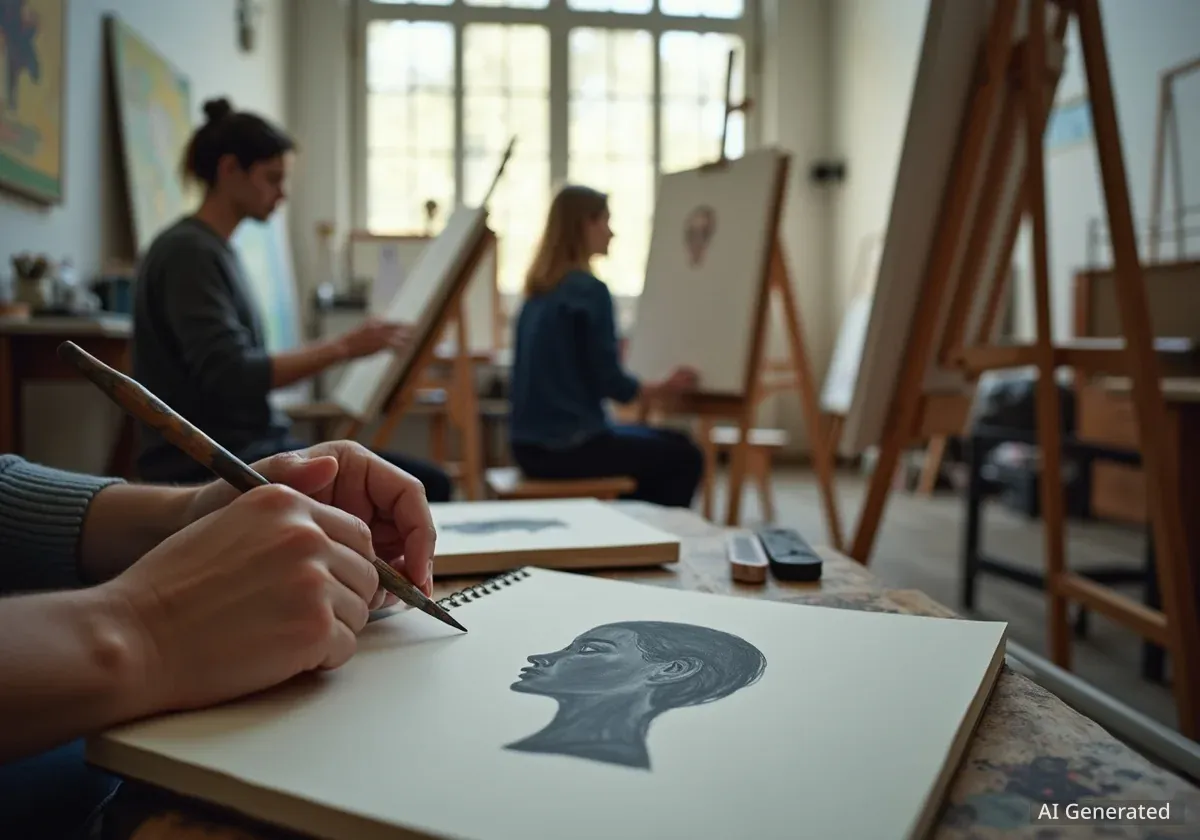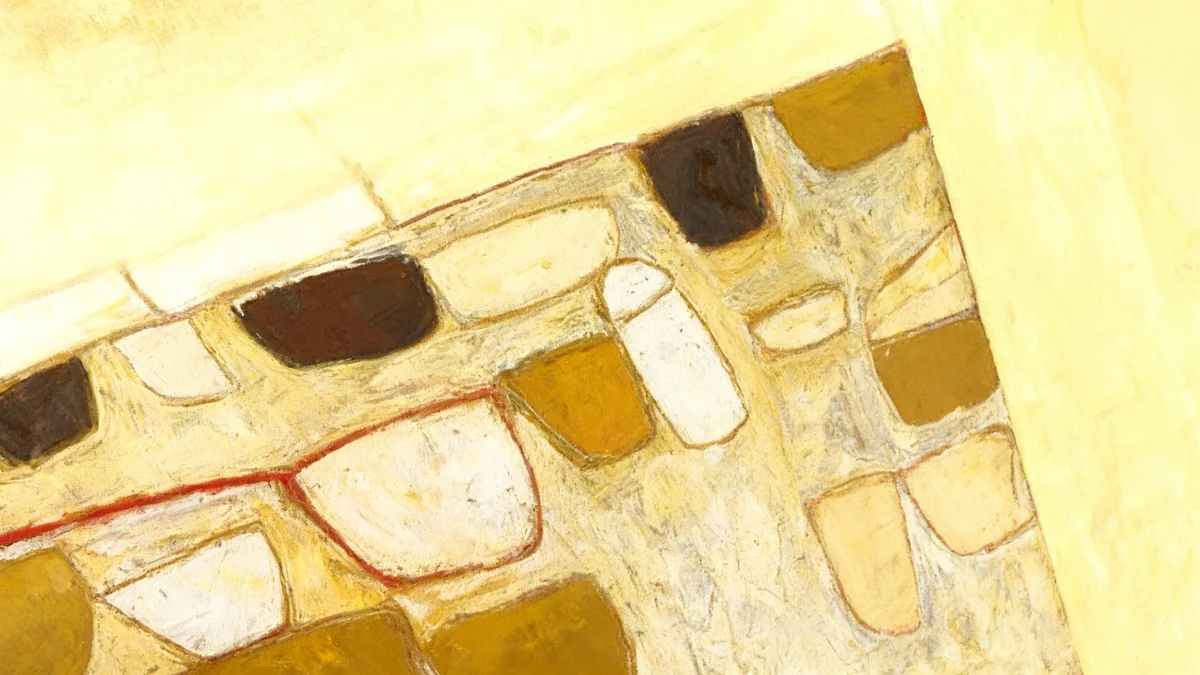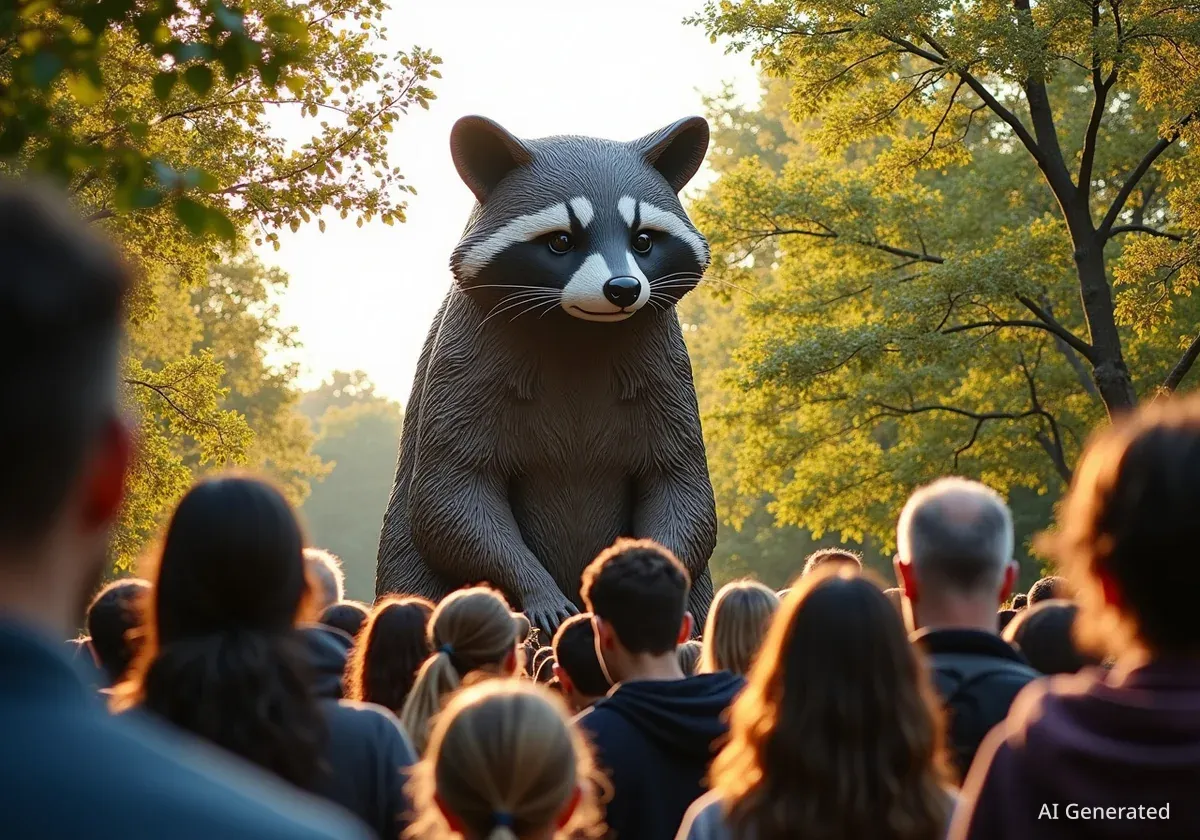A unique art group, 100 Heads Society, provides a dedicated space for artists to practice portraiture in Baltimore. Meeting weekly in a Woodberry studio, the society emphasizes community and discipline, allowing artists to hone their skills in a supportive environment. The group recently marked a significant milestone, celebrating two members who completed 100 portraits each.
Key Takeaways
- 100 Heads Society offers a weekly gathering for artists to practice alla prima portraiture.
- The group promotes community, connection, and artistic growth among its members.
- Two artists, Eugene Golovin and Jon Marchione, recently completed 100 portraits each, a major achievement.
- The society provides a vital resource for artists seeking studio space, subjects, and dedicated practice time.
The Genesis of a Creative Community
Lauren Carlo, a classically trained artist, founded 100 Heads Society in the spring of 2022. She initially hosted former classmates in her rowhome basement. The group's purpose was to provide a consistent opportunity for artists to practice portrait painting, a skill traditionally central to artistic mastery.
Artists took turns modeling for each other, and soon friends of friends joined. The basement space quickly became too small for the growing number of participants. This expansion highlighted the clear need for a dedicated art space within the community.
Interesting Fact
Alla prima is an Italian painting technique where a work is completed in one session, typically without allowing underlying layers to dry. This method demands speed and precision from the artist.
Finding a Permanent Studio
A series of fortunate events led Carlo to the current studio space on Parkdale Avenue. Her fiancé, Jon Marchione, had a friend seeking to share a warehouse. Carlo proposed using the space once a week for portrait sessions. The idea was well-received, much to her surprise.
Carlo then learned about grants from the Maryland State Arts Council. These grants allowed her to cover the studio rent, keeping the weekly portrait nights free for almost two years. This financial support was crucial for the society's early growth and accessibility. Recently, a modest $5 fee was introduced to help sustain the group, which Carlo hopes remains affordable for all participants.
The Historical Significance of Portraiture
Historically, portrait painting was a privilege reserved for the wealthy and powerful. Virginia Anderson, a senior curator at the Baltimore Museum of Art, explains that for centuries, only European royalty and clergy could commission such works. An artist's skill in drawing the human form and painting portraits was often a measure of their success.
Historical Context
In the 19th century, art schools emerged, but access to formal instruction often remained limited for women and people of color. Self-taught artists, regardless of their talent, frequently struggled to find studio space, models, and sufficient time to practice their craft. Groups like 100 Heads Society address these long-standing challenges by providing essential resources and community support.
The 100 Heads Society directly addresses these historical barriers by making portraiture accessible. It offers studio space, a consistent supply of models, and a structured time for practice. This model helps artists, regardless of their background, to develop their skills and connect with peers.
The Weekly Gathering and Artistic Exploration
Monday evenings at the 100 Heads Society typically begin quietly. Artists focus on sketching and observing the model. As the session progresses, a relaxed atmosphere develops. Conversations often start about music or television shows, with models sometimes joining in.
A break halfway through the session allows for snacks, often tater tots, fostering a social environment. While many artists, including Carlo, use oil paints, the sessions encourage experimentation with various mediums. Participants explore gouache, watercolor, charcoal, markers, and even digital illustration. This variety enriches the artistic experience for everyone involved.
"The energy feels the same, which I'm really happy about," Carlo stated. "Because it started off with friends, like people who really knew each other."
The Model's Perspective
Sara Autrey, who owns the North Baltimore thrift store Get Shredded Vintage, modeled for the group on short notice. She initially felt nervous but found the experience to be deeply sincere. Autrey described it as an honor to have artists create her likeness on paper. She realized her role was that of a "helpful tool in their artistic process."
Modeling provides a unique opportunity for self-reflection and connection. It allows individuals to be seen and studied by multiple artists, leading to diverse interpretations of their features. This process fosters a strong sense of community between artists and models.
Achieving the 100-Portrait Milestone
Eugene Golovin, a member who began painting after a back injury limited his other hobbies, exemplifies the society's impact. He met Lauren Carlo at Mobtown Ballroom and asked for advice on starting painting. Carlo suggested beginning with a simple Zorn palette: yellow ochre, warm red, ivory black, and white.
Golovin initially felt intimidated by the skilled artists around him. However, he consistently engaged with his peers, asking questions about techniques and color mixing. He focused on a different aspect each week, learning to filter what he saw and treat the head as a three-dimensional form. After two years and several months, Golovin became the first artist to complete 100 portraits at the society.
Zorn Palette
The Zorn palette, named after Swedish artist Anders Zorn, is a limited color palette consisting of only four colors: ivory black, white, yellow ochre, and vermilion (often substituted with warm red). It is known for its ability to create a wide range of realistic skin tones and is popular among portrait artists.
The Ceremony of Achievement
To celebrate Golovin and Jon Marchione reaching 100 portraits, Carlo organized a special ceremony. This event, held on the same night a reporter modeled, leaned into the group's "secret society" name. The studio transformed with dimmed lights, covered windows, and decorative skulls.
Longtime members, including Carlo, wore dark robes and Victorian-style masks. Marchione and Golovin were brought to the front. Carlo, reading from a large book, dramatically recited a text encouraging dedication to portraiture. The ceremony included kneeling, partaking in "sacred tots" (tater tots), and receiving custom-made rings inscribed with the society's name. The event culminated in laughter and applause, reinforcing the strong bonds within the artistic community.
The Impact of Being a Model
Sitting for a portrait at the 100 Heads Society offers a unique and introspective experience. Initially, it can feel awkward, with heightened awareness of one's own movements and expressions. Over time, however, a sense of relaxation often sets in. The atmosphere of quiet concentration mixed with casual conversation creates a unique environment.
Models can observe the diverse artistic interpretations of their face. Artists focus on different features: some on eyebrows, others on the nose. This varied attention highlights the subjective nature of art and the individual approaches of each painter. The experience can be deeply affirming, with models often hearing positive feedback about their features.
The Exchange
The interaction between models and artists often involves a reciprocal exchange. Some artists donate their finished work to the models as a thank you, while others sell their paintings. Beyond the tangible artwork, the process creates a connection, allowing individuals to be seen, studied, and appreciated through the artistic lens.
Participating in the 100 Heads Society, whether as a model or an artist, fosters a sense of connection and belonging. It provides a platform for artistic growth and community building, proving that dedicated space and shared passion can inspire significant creative achievements.




